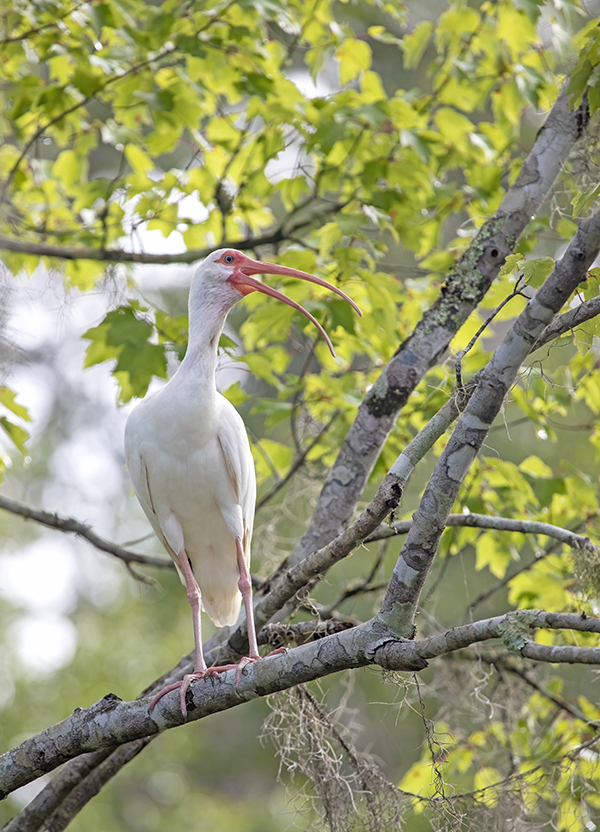Migration is picking up as the season progresses

Retired Wakulla Springs State Park Ranger Bob Thompson, on a wildlife survey at the park, snapped this photo of a white ibis.
I was waiting, listening to a distant Barred Owl, when the automatic gate at St. Marks National Wildlife Refuge chugged to life at 6 a.m. on this Thursday morning. With the refuge officially open, I drove down to the Lighthouse under a low cloud layer that was blocking the morning light. It seemed very dark.
The tide was going out and had left me with a narrow strip of beach to walk. Lightning flickered indistinctly overhead as I tripped on unseen roots in the darkness and inhaled a mosquito, which caused a major respiratory crisis accompanied by hacking and the muttering of various imprecations. By the time I had finished my half-mile walk out to the edge of Sand Cove, it was light enough to see texture in the clouds above me and the Eastern horizon had begun to turn a dull red. A thin break in the clouds revealed a patch of pale blue sky. Within it, the thinnest crescent moon smiled down on the morning.
Black Skimmers were barking as they flew low over the Gulf waters and Clapper Rails were grunting from the marshes to the North. The dropping tide had exposed a mudflat on the far end of the cove. I watched as birds flew in to land on it: skimmers, Laughing Gulls, willets, a Spotted Sandpiper, several Marbled Godwits and a pair of Reddish Egrets.
I waited until sunrise and then began to walk back. A large noisy flock of skimmers flew past me, joining the ones on the mudflat.
I was out to look for migratory warblers along the coastal berm. I found Prairie and Yellow Warblers and a single Common Yellowthroat as I walked back to the lighthouse. The Wolfberry thickets and Cedars along the beach can be very productive during Fall migration. Earlier in the week, I had found a Northern Waterthrush.
Lighthouse Pond was a mass of avian activity. There were close to 200 waders, mostly Snowy, Tricolored and Great Egrets, but also a few Little Blue Herons and a dozen Roseate Spoonbills. A mixed flock of Forster’s Terns and Black Skimmers was hunting the pond and a quartet of Blue-winged Teal were feeding in the shallows. There were shorebirds on the pond, too; Willets, Greater Yellowlegs and a single American Avocet.
Change is coming to the refuge. Some of it is the normal progression of the seasons. Migration is picking up and golden asters have begun to bloom. Sweetbay’s red-berried fruits are ripening fast. I watched a Downy Woodpecker, Eastern Kingbirds and Brown-headed Nuthatches feeding on them along Lighthouse Road.
There are administrative changes too. As part of the annual pool maintenance cycle, Stony Bayou I is being filled and the Tower Pond gates have been opened allowing it to become tidal. The long-running American Flamingo was still foraging along the edge of Stony Bayou this morning, but with rising water levels it may soon relocate to another pond, likely Mounds Pool III. Shorebirds will shift to Tower Pond for the winter. Look for them there at high tide.
Lighthouse tours are happening at the refuge again and there are plans for the resumption of the Monarch Festival on October 22nd. The Nature Store at the Visitors Center is now open on most weekends and after a two-and-a-half-year break, it looks like the St. Marks Wildlife Tours may start up again in October. Check the Friends of St. Marks website at www.stmarksrefuge.org for updates and details.
Change is a constant at the refuge. Come down and enjoy it, but try not to inhale the mosquitos..
Don Morrow can be reached at donaldcmorrow@gmail.com.